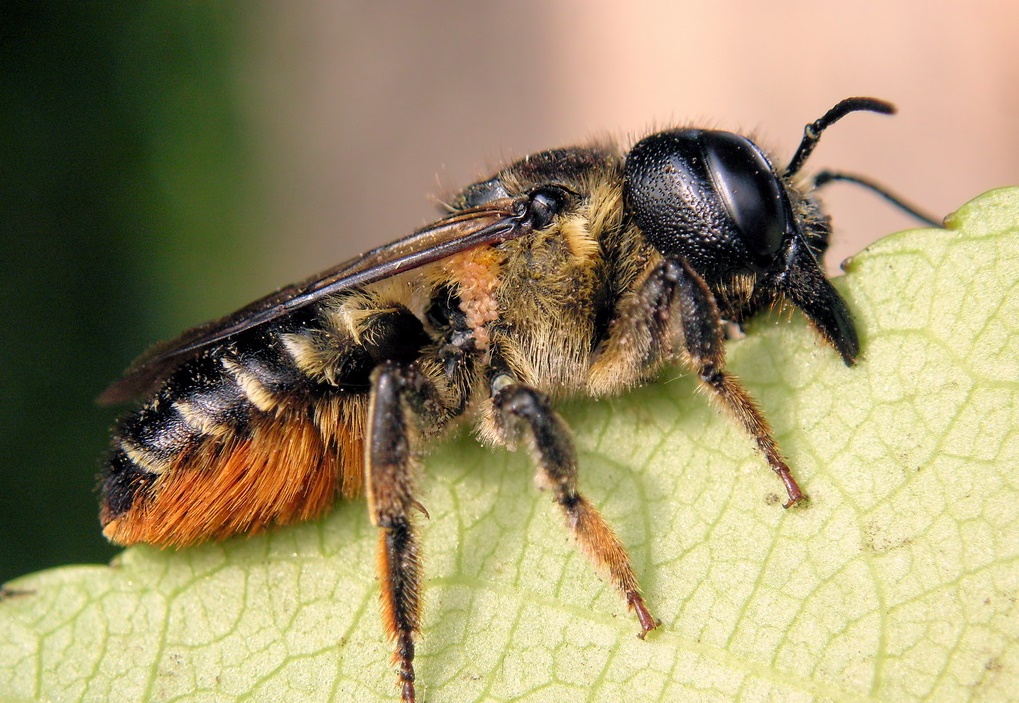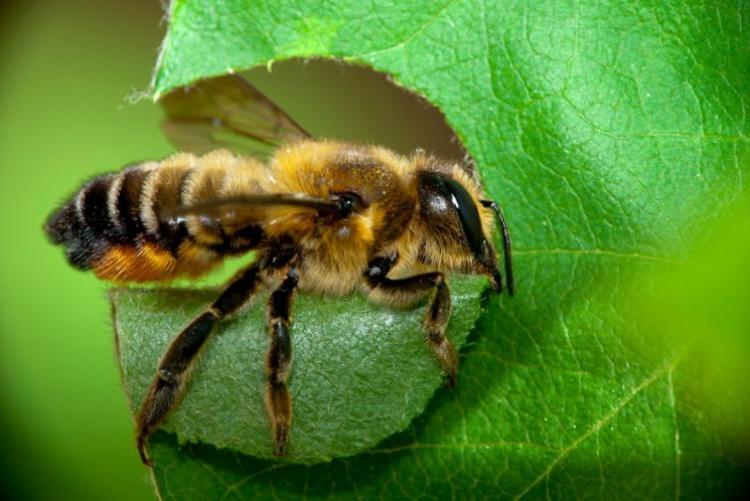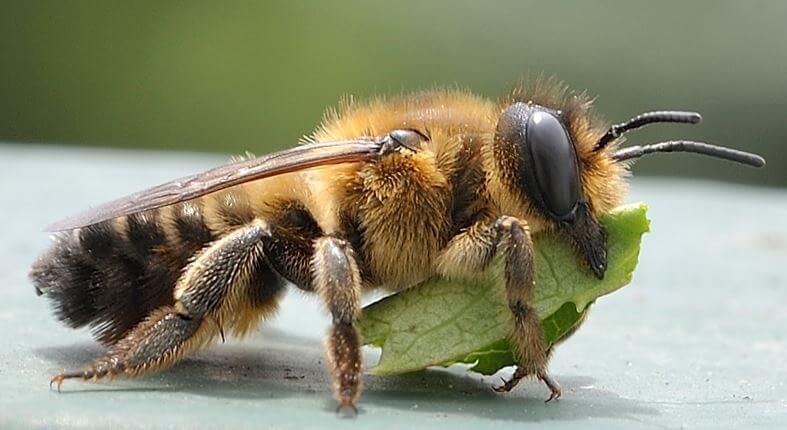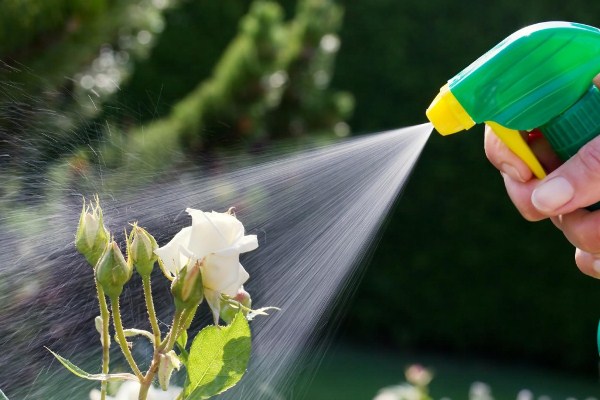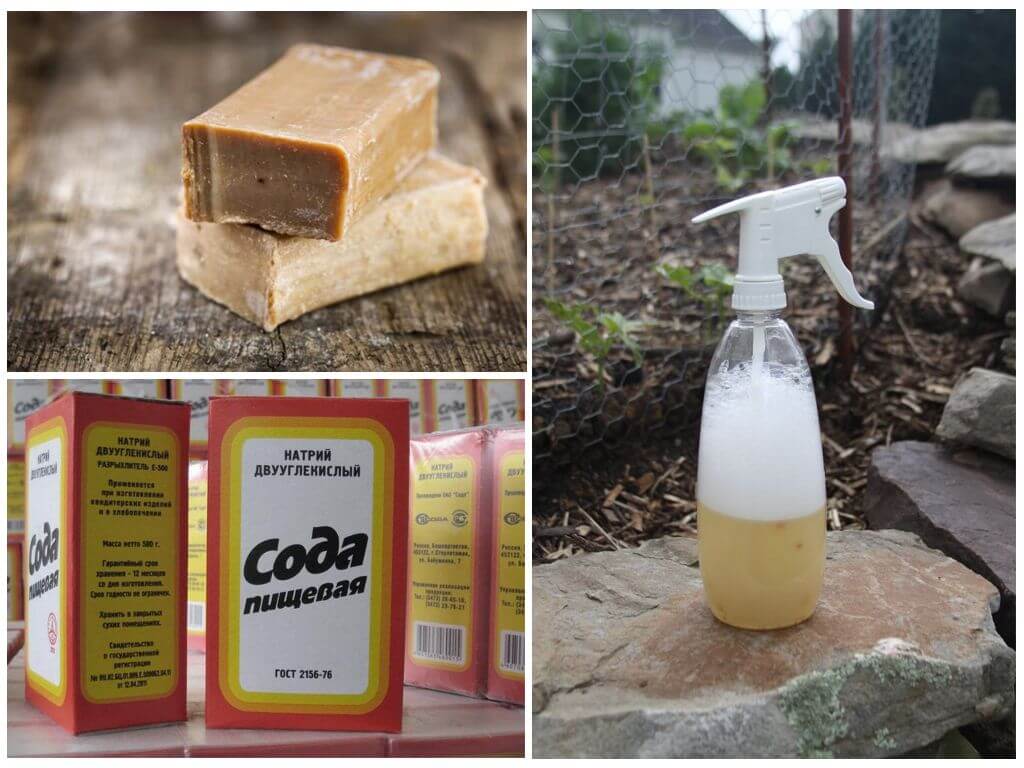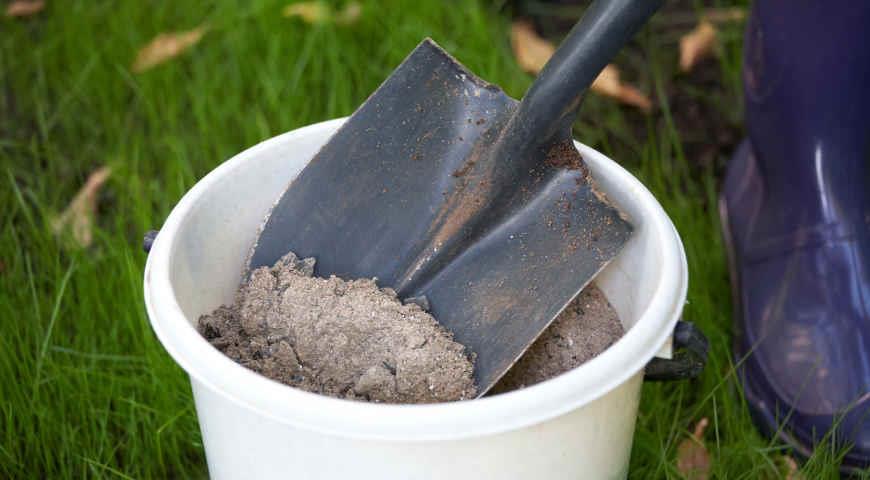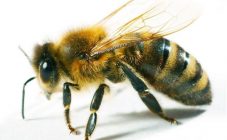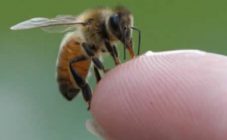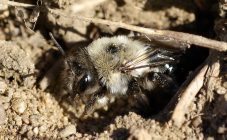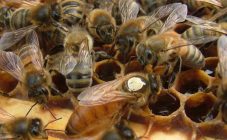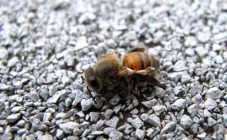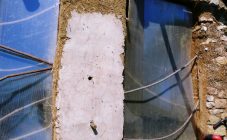Content:
Surprisingly, bees live by their own laws and in their own created society. Basically, most of them live in families, work, bring nectar to the hive. But there are those who live alone, and still manage to harm green spaces.
Bee leaf cutter description
A leaf cutter bee (megachila) is very similar in appearance to insects that extract nectar from flowers. But there are still some differences in the form of a darker color and a slightly diffuse abdomen. Unlike its relatives, the leaf cutter bee feeds on the green leaves of the plant.
Leaf cutter bee feeds on nectar from flowers. Her food speed is very high, so she can visit 20 species of flowering plants in one minute of eating. When eating, the insect willy-nilly collects pollen on its legs, and pollination occurs with each flight to a new flower.
Lifestyle and distribution
The leaf cutter bee has food preferences. Most often it can be found on rose, rose hips, privet, clover, alfalfa. She lives alone. It can even create a nest in a hollow tree.
Typically, nests contain one cell with one egg, which lies on a carpet of clover or alfalfa leaves. Insects have very small jaws, so the pieces of leaves are crushed very carefully. They do not harm any plants, even those whose leaves they feed on. Elements from the sheets are gnawed out so as not to damage the vascular system of the plant.
The body of insects is just over 1 cm long. These bees are only good for pollination of plants, as they do not produce honey or form families. Even eggs in clutches of leaf cutters later develop independently, since the mother does not live to see the appearance of her children.
The female bee lays each egg in a separate cell, the size of which ranges from 5 mm to 7 mm. Elements of the sheets are gnawed off to decorate the home. They are placed on the floor of the nest, cover its walls, getting a kind of bee carpet. Instead of honey, a leaf cutter bee produces glue that holds the leaves together at the seams. By the way, due to the lack of honey production, insects are often called leaf cutter wasp. Each egg is fed separately. Moreover, all the food elements that the egg needs for the normal development of vital activity appear in the cell before the egg itself is deposited there.
After the cell is full, it is sealed, and the larvae continue their development on their own. Females that emerge from fertilized eggs develop in the nest itself, males that emerge from unfertilized eggs develop outside its walls. The mating season for these insects begins in early spring, when the air temperature exceeds 10 ° C.
Males begin to seek the location of females, having fertilized them, they die. In the next 2-3 weeks, the female leaf cutter bees form their own nest, which she decorates with the same pieces of leaves. On average, it takes about 3 hours to form one cell, and 6 hours to fill it with provisions.The nest is formed and shaped until the last minutes of a leaf cutter female's life. Most often, bees choose the location of their future nest in roses. When a house is more or less formed, it is difficult to find it among the greenery and flowers. You can watch him and the builder bee in early spring, when construction has just begun.
Fighting bees with leaf cutters
Despite the fact that megahila does not harm plants, it spoils their appearance. In addition, she takes a few seconds to gnaw a leaf. Not all growers like to spend energy on growing a rose garden, and then instead of the beauty of fragrant flowers, observe visually damaged green leaves. This is where the harm done by the megahila ends. Otherwise, this insect is only beneficial. For example, it pollinates plants, especially legumes, collects nectar from peduncles, thereby increasing the number of ovaries, etc. So it is not recommended to develop the fight against bees with leaf cutters.
There are only a few points after which you can take protective measures:
- Too many infected leaves on bushes and trees;
- In the case where the rose is grown for financial gain.
If rose bushes have not been grown for the first year, then some recommendations can be applied to keep alfalfa bees away from flowers. A problem is easier to prevent than to deal with its consequences. To prevent the megahila from hitting the plants, they are fenced with a fine mesh, which can be purchased in specialized stores. The nets will not only cover the plant from bees, but also protect it from direct sunlight, as well as from many other, more dangerous pests.
Another option for protecting the rosebush is to spray it with a solution containing potassium. Leaf cutter bees are very fond of flowers fertilized with nitrogen, therefore, first of all, the female will fly to pollinate just such a plant.
Also, for preventive purposes, you should keep the area clean and tidy. Alfalfa bees do not fly long distances in order to rip off part of the leaf to decorate the nest. Most often, they form nests right in the weed grass, near the roses. In order to keep your front garden safe, it is recommended to pull out all the weeds.
The most humane method of controlling insects is to move their nest to another place. But for this you will have to follow the bee for some time, namely, the route of its movement, since it is very difficult to find the nest. If the nest is located in the grass, it can be carefully moved, but if it is in the trunk of a tree, you should not immediately destroy it. If possible, leave the bee alone until next season.
Bee leaf cutter how to deal with it correctly? In the fight against insects, chemical-based preparations can be used. It is possible, but not necessary, since the harm caused by insects is not so great. More harm will come from baiting megaheels.
It is allowed to use folk remedies that will make the bees fly away from the summer cottage. In order for the leaves of the rose bush to become nasty for the leaf cutter bee, they can be treated with soapy water. Dissolve one bar of laundry soap in half a bucket of water and spray the leaves of the plant. You can also sprinkle the bush with ash, tobacco, or red hot pepper. It is advisable to repeat the process after each rain.
These methods will make the plants unattractive for megaheels, the gardener can kill two birds with one stone: keep the flowers and not disturb the balance in nature.
Means in the fight against wasps on roses
Wasps, leaf cutters bees - how to deal with these insects attacking roses? In the fight against them, you can use chemical-based drugs. It is possible, but not necessary, since the harm caused by insects is not so great. It is quite possible to use folk methods.
To prevent the rose bush from attracting wasps and hornets, it can be treated with soapy water. Dissolve one bar of laundry soap in half a bucket of water and spray the leaves of the plant.
You can also sprinkle the bush with ash, tobacco, or red hot pepper. It is advisable to repeat the process after each rain.
Wasp traps can be built. To do this, a plastic bottle is cut in half, the upper part of the bottle is inserted into the lower one, with the neck down. A handle is attached to the structure, consisting of a rope or wire, for which a homemade trap can be hung on a tree, a small amount of beer is poured into it.
These methods will help protect plants from insects, while not disturbing the ecological system with chemicals.
